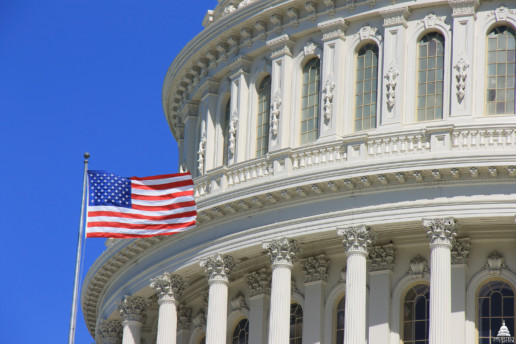Only 1 in 3 employees actually understands how their 401(k) works
Do all of your employees understand how their 401(k) works? If not check out this article from HR Morning on the statistics of about 1 in 3 employees that do not understand their 401 (k) by Jared Bilski,
When it comes to common financial vehicles like 401(k) plans, term life insurance, Roth IRAs and 529 college savings plans, most workers could use some education on the finer points.
In fact, according to a recent study by The Guardian Life Insurance Company of American, one-third or less of employees said they had a solid understanding of the most common financial products.
Problem areas
Here is the specific breakdown from the Guardian Life study on the percentage of worker that said they have a solid understanding of various financial products:
- 401(k)s and other workplace retirement plans (just 32% of workers said they had a solid understanding)
- IRAs apart from Roth IRAs (27%)
- Individual stocks and bonds (26%)
- Mutual funds (25%)
- Pensions (25%)
- Roth IRAs (24%)
- Term life insurance (23%)
- Separately managed accounts (23%)
- Disability insurance (23%)
- 529 college savings plans (23%)
- Whole life insurance (22%)
- Business insurance, such as key person insurance or buy/sell agreements (20%)
- Annuities (19%)
- Universal life insurance (19%), and
- Variable universal life insurance (18%).
Education vs. no education
One of the best ways to help workers garner a better understanding of their finances — and the financial products available to them — is through one-on-one education.
Consider this example:
The Principal Group compared the saving habits and financial acumen of workers who attended a one-on-one session the organization offered one year to those who didn’t.
What it found: Contribution rates for those who attended the session were 9% higher than those who didn’t. Also, 19% of the workers who received education opted to automatically bump up their retirement plan increases with pay increases, compared to just 2% of other employees.
Also, 92% of the employees who were enrolled in Principal’s education program agreed to take a number of positive financial steps, and 80% of those workers followed through on those steps.
See the original article Here.
Source:
Bilski J. (2017 January 27). Only 1 in 3 employees actually understands how their 401(k) works [Web blog post]. Retrieved from address https://www.hrmorning.com/only-1-in-3-employees-actually-understands-how-their-401k-works/
3 Financial Risks That Retirees Underestimate
Are you worried about the risks associated with retirement? If so check out this article from Kiplinger about some of the risks associated with retirement that retirees underestimate by Christopher Scalese
When you think of risk in retirement, what comes to mind? For many, the various risks associated with the stock market may be the first. From asset allocation risk (avoiding keeping all of your eggs in one basket) to sequence-of-return risk (the risk of taking out income when the market is down), these factors become increasingly important once your paychecks stop and you begin drawing from your investments for retirement income.
However, these are only the tip of the iceberg when it comes to key risks that should be considered for retirement planning in today's economy. Here are three areas I commonly see retirees and pre-retirees forgetting to consider:
1. Portfolio Failure Risk
How long can you live off of income from your investments? Is it likely that your investments can provide an income stream you won't outlive? There are many theories, such as the ever-popular 4% rule, which suggests that, if you maintain a portfolio consisting of 60% bonds and 40% equities, you can take 4% of your total portfolio each year. However, studies in recent years have shown this method to have about a 50% failure rate based on today's low-interest rates and market volatility.
Another withdrawal method is guessing how long you'll live and dividing your savings by 20 to 30 years—but what happens if you live 31 years?
If you do not have a written income plan for how to strategically withdraw from your accounts over the duration of your retirement, this may be a significant risk to consider.
2. Unexpected Financial Responsibility Risk
Life is full of surprises, and retirement is no different. Today's retirees are known as the "sandwich generation" with financial pressures coming from all sides—often having to provide for grown children and aging parents at the same time.
Additionally, there are difficult but significant financial planning considerations for the future loss of a spouse. You can expect to lose a Social Security payment and potentially see changes to a pension. Simultaneously, tax brackets will shrink when going from married to single, taking a larger piece of your already-reduced income.
Having a proactive, flexible financial strategy can be essential in helping you adapt to your many changing needs throughout the course of your retirement.
3. Health Care Risk
Beyond the considerations for inflation on daily purchasing power in retirement, rising costs of health care, particularly as Americans continue living longer, require explicit planning to avoid a physically disabling event from becoming a financial concern. From Medigap options to long-term care and hybrid insurance policies, considering insurance coverage for perhaps one of the most significant expenses in retirement may be a pivotal point in your retirement planning.
While these obstacles may seem daunting, identifying and understanding the concerns unique to your retirement goals should be the first step to help overcome them.
See the original article Here.
Source:
Scalese C. (2017 January). 3 financial risks that retirees underestimate [Web blog post]. Retrieved from address https://www.kiplinger.com/article/retirement/T037-C032-S014-3-financial-risks-that-retirees-underestimate.html
10 tips for furthering benefits education
Are you looking for some new ways to educate yourself in the world of benefits? Here are some great tips from Benefits Pro you can use to help increase your knowledge about benefits by Erin Moriarty-Siler
In order to maintain relevant in today's ever-changing benefits market, it's important that brokers and benefits professionals keep learning.
Whether that be by networking with others in the industry, diving in with new technology efforts, or simply chatting about client needs, it's essential industry professionals keep learning.
As part of our our marketing and sales tips series, we asked our audience for their thoughts on how to continue their benefits education.
Here are the 10 tips we liked best.
1. Cost-effective education excites employees
Employees are eager to better themselves, especially if doing so can be cost effective through innovative benefits. Consider offering financial planning and educational services like career development courses or college prep classes, as these are becoming more and more popular.
2. Industry events
Disruption will continue in the insurance industry, but will you be able to keep up? Stay up-to-date by attending industry events, such as the BenefitsPRO Broker Expo in April.
3. Practice makes perfect
To retain knowledge and keep a competitive edge, it's important to practice and refresh skills year-round (think social media training, for instance).
4. It's not a "no," it's a growth opportunity
Treat rejection as a learning opportunity. Find ways to turn a no into a yes and remember that persistence prevails.
5. Trial and error is the best teacher
“Experiments are usually about learning. When you get a negative outcome, you’re still really learning something that you need to know.” Linda Hill, professor of business administration, Harvard Business School
6. Think outside your own experience
Look to your colleagues for exclusive insight you might not have. Ask a younger co-worker what they’d most like out of a benefits package, or what type of insurance is best for your officemate nearing retirement.
7. Learning and education are not created equal
“I’m a three-time college dropout, so learning over education is very near and dear to my heart, but to me, education is what people do to you, learning is what you do to yourself.” Joi Ito, director, MIT Media Lab
8. Become the expert
“You can distinguish yourself with top-notch technical or industry knowledge. It pays to be viewed as an expert, whether in risk management or the regulatory landscape. You’ll open up many opportunities by becoming an authority.” Renee Preslar, communications manager, Transamerica Employee Benefits
9. Money, money, money
“The No. 1 employee wellness trend in 2017 will be an increasing focus on helping employees better themselves financially by providing the tools, resources, education and environment to improve their finances.” Matt Cosgriff, retirement plan consultant, BerganKDV Wealth Management.
10. Too much is never enough
“You can never be overdressed or overeducated.” Oscar Wilde
See the original article Here.
Source:
Moriarty-Siler E. (2017 January 24). 10 tips for furthering benefits education[Web blog post]. Retrieved from address https://www.benefitspro.com/2017/01/24/10-tips-for-furthering-benefits-education?ref=hp-news&page_all=1
Strategic Talent Investment
Looking for ways to develop existing talent? Check out this interesting article from SHRM about the impact and benefits of investing in talent by Sharon Margules
See the original article Here.
Source:
Margules S. (2017 January 19). Strategic talent investment [Web blog post]. Retrieved from address https://blog.shrm.org/blog/strategic-talent-investment
IRS may have big ACA employer tax woes, advocate says
IRS may play a big part in your company's ACA tax filing. Checkout this article from Benefits Pro about what the IRS will be looking for in companies ACA filings this year by Allison Bell
An official who serves as a voice for taxpayers at the Internal Revenue Service says the IRS may be poorly prepared to handle the wave of employer health coverage offer reports now flooding in.
The Affordable Care Act requires "applicable large employers" to use Form 1095-C to tell their workers, former workers and the IRS what, if any, major medical coverage the workers and former workers received. Most employers started filing the forms in early 2016, for the 2015 coverage year.
This year, the IRS is supposed to start imposing penalties on some employers who failed to offer what the government classifies as solid coverage to enough workers.
If Donald Trump's promise holds true, the Affordable Care Act could be on its way out. Along with it may...
Nina Olson, the national taxpayer advocate, says the IRS was not equipped to test the accuracy of ACA health coverage information reporting data before the 2016 filing season, for the 2015 coverage year. The IRS expected to receive just 77 million 1095-C forms for 2015, but it has actually received 104 million 1095-C's, and it has rejected 5.4 percent of the forms, Olson reports.
"Reasons for rejected returns include faulty transmission validation, missing (or multiple) attachments, error reading the file, or duplicate files," Olson says.
Meanwhile, the IRS has had to develop a training program for the IRS employees working on employer-related ACA issues on the fly, and it was hoping in November to provide the training this month, Olson says.
"The training materials are currently under development," Olson says. She says her office did not have a chance to see how complete the training materials are, or how well they protect taxpayer reports.
Olson discusses those concerns about IRS efforts to administer ACA tax provisions and many other tax administration concerns in a new report on IRS performance. The Taxpayer Advocate Service prepares the reports every year, to tell Congress how the IRS is doing at meeting taxpayers' needs.
In the same report, Olson talks about other ACA-related problems, such as headaches for ACA exchange plan premium tax credit subsidy users who are also Social Security Disability Insurance program users, and she gives general ACA tax provision administration data.
APTC subsidy
The ACA premium tax credit subsidy program helps low-income and moderate-income exchange plan users pay for their coverage.
Exchange plan buyers who qualify can get the tax credit the ordinary way, by applying for it when they file their income tax returns for the previous year. But about 94 percent of tax credit users receive the subsidy in the form of an "advanced premium tax credit."
When an exchange plan user gets an APTC subsidy, the IRS sends the subsidy money to the health coverage issuer while the coverage year is still under way, to help cut how much cash the user actually has to pay for coverage.
When an APTC user files a tax return for a coverage year, in the spring after the end of the coverage year, the user is supposed to figure out whether the IRS provided too little or too much APTC help. The IRS is supposed to send cash to consumers who got too little help. If an APTC user got too much help, the IRS can take some or all of the extra help out of the user's tax refund.
Another ACA provision, the "individual shared responsibility" provision, or individual coverage mandate provision, requires many people to obtain what the government classifies as solid major medical coverage or else pay a penalty.
Individual taxpayers first began filing ACA-related tax forms in early 2015, for the 2014 coverage year. Early last year, individual taxpayers filed ACA-related forms for the second time, for the 2015 coverage year.
Only 6.1 million taxpayers told the IRS they owed individual mandate penalty payments for 2015, down from 7.6 million who owed the penalty for 2014.
But, in part because the ACA designed the mandate penalty to get bigger each year for the first few years, the average penalty payment owed increased to $452 for 2015, from $204 for 2014.
The number of households claiming some kind of exemption from the penalty program increased to 8.6 million, from 8.4 million.
The number of filers who said they had received APTC help increased to 5.3 million for 2015, up from 3.1 million for 2014. And the amount of APTC help reported increased to $18.9 billion for 2015, from $11.3 billion in APTC subsidy help for 2014.
That means the 2015 recipients were averaging about $3,566 in reported subsidy help in 2015, down from $3,645 in reported help for 2014.
Olson says her office helped 10,910 taxpayers with ACA premium tax credit issues in the 12-month period ending Sept. 30, 2016, up from 3,318 in the previous 12-month period.
One of her concerns is how the Social Security Disability Insurance program, which is supposed to serve people with severe disabilities, interacts with the ACA provision that requires people who guess wrong about their income during the coverage year to pay back excess APTC subsidy help.
SSDI lump-sum payment headaches
Some Social Security Disability Insurance recipients have to fight with the Social Security Administration for years to qualify for benefits. Once the SSDI recipients win their fights to get benefits, the SSA may pay them all of the back benefits owed in one big lump sum.
The big, lump-sum disability benefits payments may increase the SSDI recipients' income for a previous year so much they end up earning too much for that year to qualify for ACA premium tax credit help, Olson says in the new report.
The SSDI recipients may then have to pay all of the ACA premium tax credit help they received back to the IRS, Olson says.
So far, IRS lawyers have not figured out any law they can use to protect the SSDI recipients from having to pay large amounts of premium tax credit help back to the government, Olson says.
For now, she says, her office is just trying to work on a project to warn consumers about how accepting any lump-sum payment, including an SSDI lump-sum benefits payment, might lead to premium tax credit headaches.
See the original article Here.
Source:
Bell A. (2017 January 16). IRS may have big ACA employer tax woes, advocate says [Web blog post]. Retrieved from address https://www.benefitspro.com/2017/01/16/irs-may-have-big-aca-employer-tax-woes-advocate-sa?page_all=1
Get Health Insurance Through Your Employer? ACA Repeal Will Affect You, Too
Great article from Health Affairs about the effects of ACA repeal on employer healthcare by JoAnn Volk
Much of the recent attention on the future of the Affordable Care Act (ACA) has focused on the fate of the 22.5 million people likely to lose insurance through a repeal of Medicaid expansion and the loss of protections and subsidies in the individual insurance market. Overlooked in the declarations of who stands to lose under plans to “repeal and replace” the ACA are those enrolled in employer-sponsored health plans — the primary source of coverage for people under 65.
Job-based plans offered to employees and their families cover 150 million people in the United States. If the ACA is repealed, they stand to lose critical consumer protections that many have come to expect of their employer plan.
It’s easy to understand the focus on the individuals who gained access to coverage thanks to the health reform law. ACA drafters targeted most of the law’s insurance reforms at the individual and small-group markets, where consumers and employers had the greatest difficulty finding affordable, adequate coverage prior to health reform. The ACA’s market reforms made coverage available to those individuals with pre-existing conditions who couldn’t obtain coverage in the pre-ACA world, and more affordable for those low- and moderate-income families who couldn’t afford coverage on their own.
Less noticed, but no less important, the ACA also brought critical new protections to people in large employer plans. Although most large employer plans were relatively comprehensive and affordable before the ACA, some plans offered only skimpy coverage or had other barriers to accessing care, leaving individuals—particularly those with costly, chronic health conditions—with big bills and uncovered medical care. For that reason, the ACA extended several meaningful protections to employees of large businesses.
Preventive Services Without Cost-Sharing
The ACA requires all new health plans, including those sponsored by employers, to cover recommended preventive services without cost-sharing, bringing new benefits to 71 million Americans. That means individuals can get the screenings, immunizations, and annual check-ups that can catch illness early or prevent it altogether without worrying about meeting a costly deductible or co-payment. With that peace of mind, it’s no wonder it’s one of the most popular provisions of the ACA. Women employees can also access affordable contraception, making available a wider variety of contraceptive choices and increasing use of long-term contraceptive methods.
Pre-Existing Condition Exclusions
Under the ACA, employers cannot impose a waiting period for coverage of a pre-existing condition. Prior to the ACA, individuals who became eligible for an employer plan—for example, once hired for a new job—might have to wait up to 12 months for the plan to cover pre-existing health conditions. You could “buy down” that waiting period with months of coverage under another plan, so long as it was the right kind of plan and you didn’t go without coverage for 63 days or more. But if you lost your job, couldn’t afford COBRA, went a few months without coverage and then were lucky enough to get another job with benefits, you might find the care you needed wasn’t covered under your plan for an entire year.
Dependent Coverage To Age 26
The ACA requires all health plans, including those sponsored by large employers, to cover dependents up to age 26. Prior to the ACA, one of the fastest growing groups of uninsured was young adults — not because they turned down coverage offered to them, but because they were less likely to have access to employer-based plans or other coverage. The result has been a dramatic increase in the number of insured young adults, particularly among those with employer-sponsored coverage. This ACA requirement is one provision President-elect Trump and many anti-ACA legislators have pledged to retain.
Annual Out-Of-Pocket Limit
The ACA requires all new health plans, including those sponsored by employers, to cap the amount individuals can be expected to pay out-of-pocket each year. Prior to the ACA, even those with the security of coverage on the job couldn’t count on protection from crippling out-of-pocket costs.
Prohibition On Annual And Lifetime Limits
The ACA prohibits employer plans from having an annual or lifetime dollar limit on benefits. Prior to the ACA, employer plans often included a cap on benefits; when employees hit the cap, the coverage cut off. For individuals who needed costly care, like a baby born prematurely or those with hemophilia or multiple sclerosis, that often meant a desperate scramble to find new coverage options as one after another benefit limit was reached.
External Review
The ACA guarantees individuals the right to an independent review of a health plan’s decision to deny benefits or payment for services, regardless of whether the employer plan is insured or self-funded. Prior to the ACA, only workers in insured plans had the right to an independent review of a denied claim. But more than 60 percent of workers are in self-funded plans, and the only option for those workers to hold their plan accountable was to sue, an expensive and lengthy process.
If you’re one of the 150 million people who get their coverage through an employer plan, you may want to pay attention to the prognostications of what’s to become of the ACA. Your access to high-quality, affordable health care will depend on the outcome.
See the original article Here.
Source:
Volk J. (20174 January 11). Get health insurance through your employer? ACA repeal will affect you, too [Web blog post]. Retrieved from address https://healthaffairs.org/blog/2017/01/11/get-health-insurance-through-your-employer-aca-repeal-will-affect-you-too/
Feds pump out even more Obamacare instructions
Have you heard about the recent changes coming to the ACA? If not take a look at this great article from HR Morning about the recent changes that will be going into effect for the ACA by Jared Bilski
If you believe Republicans on Capitol Hill, the Affordable Care Act (ACA) isn’t long for this world. Still, the Obama administration continues to clarify how businesses are supposed to comply with the law’s many provisions.
The Department of Labor (DOL), Department of Health and Human Services (HHS) and the Internal Revenue Service (IRS) just put their heads together for the 35th time to address questions surrounding Obamacare reforms.
Here’s some of the most useful info to come out of this latest FAQ:
Qualified small employer HRA
As HR Morning reported previously, the 21st Century Cures Act, among other things, allows certain small employers to offer a general purpose stand-alone health reimbursement arrangement (HRA) without violating the ACA. It is also referred to as a “qualified small employer health reimbursement arrangement” — or QSEHRA.
The FAQ touches on how this new law jibes with the ACA and clarified that in order to be a QSEHRA, the structure of the plan must:
- be funded entirely by an eligible employer — one with fewer than 50 full-time equivalent employees in the prior year and that doesn’t offer a group health plan to any of its employees
- provide payment to, or reimbursement of, an eligible employee for medical care under Code section 213(d)
- not reimburse more than $4,950 for eligible expenses for individuals or $10,000 for families, and
- be provided to all eligible employees of the employer offering the HRA.
One thing the 21st Century Cures Act (and the feds’ FAQ) doesn’t address: Whether the Employee Retirement Income Security Act (ERISA) applies to a QSEHRA.
Special Enrollment & HIPAA
The FAQ also addressed special enrollment for group health plans under the Health Insurance Portability and Accountability Act (HIPAA). Because HIPAA generally allows current employees and dependents to enroll in a company’s group health plan if the employees/dependents lose their previous coverage, they must be offered the same special enrollment option if they lose individual market coverage (i.e., health coverage they obtained through the individual Obamacare marketplace — or “exchanges”).
This could happen to individual market participants if an insurer that was covering an employee/dependent decides to stop offering that individual market coverage. As we saw last year, several major insurers have taken that step.
One exception to this special enrollment: If the loss of coverage is due to a failure to pay premiums in a timely manner — or “for cause.”
Updated women’s preventive services
As you know, under the ACA, non-grandfathered health plans are required to provide recommended preventives services for women without any cost-sharing.
Those services are listed in the Health Resources and Services Administration’s (HRSA) guidelines, and the guidelines were just updated on December 20, 2016. The updated guidelines bolster many of the existing covered preventive care services for women in the areas of:
- breast cancer
- cervical cancer
- gestational diabetes
- HIV, and
- domestic violence.
The services in the updated guidelines must be covered — without cost-sharing — for plan years beginning on or after December 20, 2017 (Jan. 1, 2018 for calendar year plans). Until then, plans can keep using the previous HRSA guidelines.
See the original article Here.
Source:
Bilski J. (2017 January 6). Feds pump out even more Obamacare instructions [Web blog post]. Retrieved from address https://www.hrmorning.com/feds-pump-out-even-more-obamacare-instructions/
DOL and IRS want a closer look at your retirement plan
Are you worried that your company's retirement plan is not up to government standards? If so take a look at this article from HR Morning about what the DOL and IRS are looking for in retirement plans by Jared Bilski
Two of the most-feared government agencies for employers — the DOL and IRS — have decided there’s a real problem with the way retirement plans are being run, and they’re ramping up their audits to find out why that is.
In response to the many mistakes the agencies are seeing from retirement plan sponsors, the IRS and DOL will be increasing the frequency of their audits.
What does that mean for you? According to experts, plan sponsors can expect the feds to dig deep into the minute operations of plans. That means the unfortunate employers who find themselves in the midst of an audit can expect to be asked for heaps of plan info.
Linda Canafax, a senior retirement consultant with Willis Towers Watson, put it like this:
“The DOL and IRS are truly diving deep into the operations of the plans. We have seen a deeper dive into the operations of plans, particularly with data. Plans may be asked for a full census file on the transactions for each participant. Expect the DOL and IRS to do a lot of data mining.”
What to watch for
Ultimately, it’s impossible to completely prevent an audit. But employers can — and should — do certain things to safeguard themselves in the event the feds come knocking.
First, a self-audit is always a good idea. It’s always better for you to discover any problems before the feds do. Next, you’ll want to be on the lookout for the types of errors that can lead the feds to your workplace in the first place.
The most common errors the IRS and the DOL are looking for:
- Untimely remittance of employee deferrals (i.e., contributions)
- Incorrect compensation definition (plan documents dictate which types of comp employees are eligible to contribute from)
- Not following the plan’s own directives, and
- Not having a good long-term system (20-30 years out) for tracking and paying benefits to vested participants.
See the original article Here.
Source:
Bilski J. (2017 January 6). DOL and IRS want a closer look at your retirement plan[Web blog post]. Retrieved from address https://www.hrmorning.com/dol-and-irs-want-to-take-a-closer-look-at-your-retirement-plan/
What medical conditions are driving employer healthcare costs?
Do you know which medical conditions are driving your healthcare cost? Check out this great article from Employee Benefits Advisor about the cost associated with your employer healthcare by Phil Albinus
Healthcare costs surrounding diabetes reached $101 billion in diagnoses and treatments over the past 18 years — and the cost grew 36 times faster than the cost of ischemic heart disease, the leading cause of death in the U.S. Further, out of 155 medical conditions, only 20 accounted for half of all medical spending, according to a JAMA analysis of 2013 healthcare costs.
The third-most expensive medical condition, low back and neck pain, primarily strikes adults of working age while diabetes and heart disease is primarily found in people 65 and older.
The JAMA study found total health spending for these conditions totaled $437 billion in 2013. Diabetes, heart disease, low back and neck pain, along with hypertension and injuries from falls, comprise 18% of all personal health spending. All in all, 20 conditions make up more than half of all spending on healthcare in the U.S.
These stark figures shed light on the rising healthcare costs that employers pay when addressing their workforce’s ailments.
According to Francois Millard, senior vice president and chief actuarial officer for Vitality Group, one of the study’s sponsors, this is the first study to dig into the details of the leading ailments of the U.S. and its costs to employers and families as they deal with the conditions.
“In absolute terms, most money for care is in the working age population,” he says. “It impacts households and employers and contributes to the financial burden of families.”
“What we see is the financial burden increases as the disease increases, and while the paper doesn’t go into detail, we already have a significant knowledge of diabetes and heart condition. It is related to modifiable behavior.”
The JAMA study noted the differences between public health program spending from personal health spending, including individual out-of-pocket costs and spending by private and government insurance programs.
“While it is well known that the U.S. spends more than any other nation on healthcare, very little is known about what diseases drive that spending,” said Dr. Joseph Dieleman, lead author of the paper and assistant professor at the Institute for Health Metrics and Evaluation at the University of Washington, in a press statement. “IHME is trying to fill the information gap so that decision-makers in the public and private sectors can understand the spending landscape, and plan and allocate health resources more effectively.”
Despite using figures from 2013, the information can help employers as they identify where their healthcare dollars are going.
“Given the biggest increases in healthcare spending on impact working age populations, it requires employers to improve their work environments and facilitate good health. And [this study can] help increase the transparency of health within their populations,” says Millard.
“Employers need to think what they do that impacts beyond the four walls of the employers and create a symbiotic relationship with health within their societies,” he adds.
The study can also boost transparency into the healthcare data. “This study is also an accountability and outcome of the money they are spending on health treatment,” Millard says. “Is it sufficient to still pay for services or can we push for more accountability for health outcomes? The other thing this facilities is that employers get the adequate level of data. They can ask the right questions and determine accountability for the huge amounts of healthcare.”
He adds, “With all the uncertainty around 2017, perhaps this transparency will give employers a voice to all of the money that they are spending.”
The top 10 most costly health expenses in 2013:
1. Diabetes – $101.4 billion
2. Ischemic heart disease – $88.1 billion
3. Low back and neck pain – $87.6 billion
4. Hypertension – $83.9 billion
5. Injuries from falls – $76.3 billion
6. Depressive disorders – $71.1 billion
7. Oral-related problems – $66.4 billion
8. Vision and hearing problems – $59 billion
9. Skin-related problems, such as cellulitis and acne – $55.7 billion
10. Pregnancy and postpartum care – $55.6 billion
See the original article here.
Source:
Albinus P. (2017 January 12). What medical conditions are driving employer healthcare costs?[Web blog post]. Retrieved from address https://www.employeebenefitadviser.com/news/what-medical-conditions-are-driving-employer-healthcare-costs?brief=00000152-1443-d1cc-a5fa-7cfba3c60000
How to encourage increased investment in financial wellbeing
Is financial wellness an important part of your company culture? By promoting financial wellness among your employees', employers can reap the benefits as well. Check out this great article from Employee Benefits Advisor about the some of the effects that promoting financial wellness can have. By Cort Olsen
Financial wellness has come to the forefront of employers’ wellbeing priorities. Looking back on previous years of participation in retirement savings programs such as 401(k)s, employers are not satisfied with participation, an Aon study shows.
As few as 15% of employers say they are satisfied with their workers’ current savings rate, according to a new report from Aon Hewitt. In response, employers are focused on increasing savings rates and will look to their advisers to help expand financial wellbeing programs.
Aon surveyed more than 250 U.S. employers representing nearly 9 million workers to determine their priorities and likely changes when it comes to retirement benefits. According to the report, employers plan to emphasize retirement readiness, focusing on financial wellbeing and refining automation as they aim to raise 401(k) savings rates for 2017.
Emphasizing retirement readiness
Nearly all employers, 90%, are concerned with their employees’ level of understanding about how much they need to save to achieve an adequate retirement savings. Those employers who said they were not satisfied with investment levels in past years, 87%, say they plan to take action this year to help workers reach their retirement goals.
“Employers are making retirement readiness one of the important parts of their financial wellbeing strategy by offering tools and modelers to help workers understand, realistically, how much they’re likely to need in order to retire,” says Rob Austin, director of retirement research at Aon Hewitt. “Some of these tools take it a step further and provide education on what specific actions workers can take to help close the savings gap and can help workers understand that even small changes, such as increasing 401(k) contributions by just two percentage points, can impact their long-term savings outlook.”
Focusing on financial wellbeing
While financial wellness has been a growing trend among employers recently, 60% of employers say its importance has increased over the past two years. This year, 92% of employers are likely to focus on the financial wellbeing of workers in a way that extends beyond retirement such as help with managing student loan debt, day-to-day budgeting and even physical and emotional wellbeing.
Currently, 58% of employers have a tool available that covers at least one aspect of financial wellness, but by the end of 2017, that percentage is expected to reach 84%, according to the Aon Hewitt report.
“Financial wellbeing programs have moved from being something that few leading-edge companies were offering to a more mainstream strategy,” Austin says. “Employers realize that offering programs that address the overall wellbeing of their workers can solve for myriad challenges that impact people’s work lives and productivity, including their physical and emotional health, financial stressors and long-term retirement savings.”
The lessons learned from automatic enrollment are being utilized to increase savings rates. In a separate Aon Hewitt report, more than half of all employees under plans with automatic enrollment default had at or above the company match threshold. Employers are also adding contribution escalation features and enrolling workers who may not have been previously enrolled in the 401(k) plan.
“Employers realize that automatic 401(k) features can be very effective when it comes to increasing participation in the plan,” Austin says. “Now they are taking an automation 2.0 approach to make it easier for workers to save more and invest better.”
See the original article Here.
Source:
Olsen C. (2017 January 16). How to encourage increased investment in financial wellbeing [Web blog post]. Retrieved from address https://www.employeebenefitadviser.com/news/how-to-encourage-increased-investment-in-financial-wellbeing?feed=00000152-1377-d1cc-a5fa-7fff0c920000









